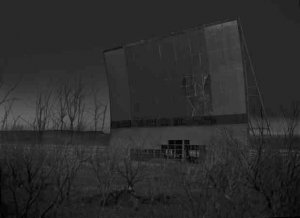【写真展】イメージの洞窟 意識の源を探る @東京都写真美術館 by ユウキタシロ/Yuki Tashiro

洞窟の中で、人は自分の認識論と向き合うことになるだろう。
Read more写遊百珍, 2019年11月23日

洞窟の中で、人は自分の認識論と向き合うことになるだろう。
Read moreぴあ/PIA, 2019年10月30日

・・・フィオナ・タン、ゲルハルト・リヒターに、北野謙、志賀理江子、オサム・ジェームス・中川という作家が加わって会場を埋めた作品は、それぞれが微妙に絡み合って実に不思議な空間を作り出していた・・・
Read more毎日新聞/The Mainichi, 2019年10月28日

長い時間をかけてできあがった岩肌の色合いや凹凸。年老いた人の皮膚のようだと思いながら、写真を見る。脳裏には、ひんやりした空気や湿気、こけの匂いが立ち上ってくる。ここは、信仰の場であり、沖縄戦では集団自決の場所ともなったガマ(洞窟)だ。
Read moreアートスケープ/Artscape, 2019年10月5日

会期:2019/10/01~2019/11/24
東京都写真美術館2階展示室[東京都]
複数のアーティストが参加するグループ展は、出品者の組み合わせや展示会場の配分がうまくいかないと後味の悪いものになることがある。だが、今回の「イメージの洞窟 意識の源を探る」展に関していえば、それがかなりうまくいったのではないだろうか。北野謙、志賀理江子、フィオナ・タン、オサム・ジェームス・中川、ゲルハルト・リヒターという出品者の顔ぶれを見る限りでは、およそまとまりがあるとは思えないのだが、互いの作品がとてもうまく絡み合って、見応えのある展示空間になっていた。キュレーターの丹羽晴美の能力が充分に発揮されたともいえるが、それ以上に、それぞれの展示作品が出会うことで、思いがけない化学反応を起こしたのではないかと思う。
Read more美術手帖:Bijutsutecho, 2019年10月1日

古代に始まり現代にいたるまで、様々な表現の源泉となっている「洞窟」。これをモチーフとした展覧会「イメージの洞窟 意識の源を探る」が、東京都写真美術館でスタートした。「ガマ」と呼ばれる沖縄の洞窟を撮影した写真で構成されるオサム・ジェームス・中川のインスタレーション。本展キュレーターの丹羽晴美(東京都現代美術館学芸員)は中川の写真集『GAMA Caves』(赤々舎、2014)を見たことをきっかけに、同シリーズを軸とした本展を構想したという。壁面に展示される「ガマ」は、暗闇の洞窟内にカメラをセットし、中川が懐中電灯で周囲を照らすことで撮影したシリーズだ。中川は本作について、「自分が時間をかけてそこにいる必要を感じたので、ストロボを使いませんでした。洞窟のなかのスピリットたちを可視化する試みです」と語る。
Read moreTokyo Art Beat, 2019年10月1日

Osamu James Nakagawa presents an installation, fusing contemporary technology and his own original techniques to present a visualization of an Okinawan cave (gama), overlapping history with his own identity.
Read more東京新聞, 2019年9月21日

…オサム・ジェームス中川が沖縄のガマ(洞窟)を撮影した写真やドイツを代表する現代美術家ゲルタルト・リヒターの作品13展を紹介するなど、充実の内容…
写遊百珍, 2019年5月4日

KYOTOGRAPHIE 2019年のメイン展示及びKG+セレクトなど、「表」の主力プログラムが会場演出、体験型展示に舵を切っている中、「裏」の横綱級が存在する。美しいプリントと深いテーマ性によって、写真が美術品であることを体現していると言ってよいだろう。
Read morePhotographic Museum of Humanity, 2019年3月27日

The theme for this, the seventh edition, is Vibe. “A vibe is a distinctive emotional atmosphere, something sensed intuitively and deeply connected to our mood” write the festival’s co-founders Lucille Reyboz and Yusuke Nakanishi. “Vibes rush over you when you meet a person, confront a memory or event, visit a place, hear a piece of music, or remember a time. These invisible waves, both positive and negative alter our experience, they either separate us or connect us.” Weronika Gęsicka, Osamu James Nakagawa, Benjamin Millepied, Alejandro González, Paolo Pellegrin, and Kosuke Okahara are among the exhibitors exploring this conceptual idea.
Read moreBritish Journal of Photography, 2019年3月19日

Elsewhere, Japanese-American artist Osamu James Nakagawa presents Eclipse: 蝕 / 廻: Kai, a project based on the identity of his two home countries with images from the early 1990s to the present day.
Read moreArtscape, 2018年12月1日

中川は1990年代に「アメリカン・ドリームが秘める神話」の探求の一環として「ドライブ・イン・シアター」のシリーズを制作した。アメリカ各地で撮影された野外映画館の画面にKKKのデモや移住労働者などのイメージをデジタル画像ではめ込んだ作品である。今回の展示にも同シリーズから3点出品されている。だが中心になっているのは、新作の「Eclipce: 蝕」シリーズである。
Read more産経新聞, 2018年11月11日

昼なのか夜なのか。不思議なダークさが満ちた画面に浮かぶ長方形。周囲の情景を確かめると、長く使われずに放置された巨大な構造物であることがわかる。似たような廃虚がいくつも並ぶ。ニューメキシコ、コロラド、テネシー、テキサス…きっとあちこちにあるのだろう。
東京・東麻布のギャラリー「PGI」でオサム・ジェームス・中川さんの写真展「Eclipse:蝕」が開かれている。車に乗ったまま映画を観賞するドライブインシアターの跡地をアメリカ各地で撮影したシリーズだ。
現政権の掲げる「グレート・アゲイン」への違和感から、90年代に撮った写真を焼き直し、新たに撮影も重ねたという。社会格差、排他主義…。思索をうながされ、暗い画面がぐっと重みを増す。
Read moreTokyo Art Beat, 2018年10月1日

Osamu James Nakagawa was born in New York City and raised in Japan before returning to the States as a teen in the 1970s. His career as an artist began in the 1990s. Since then he has worked on numerous projects exploring identity and the effects of moving between countries. An interest in dissecting the American dream led him to work on “Drive-In Theater” from 1992 through 1997
Read moreLimestone Post Review, 2017年10月5日

Most of us keep thoughts of mortality, especially our own, at arm’s length. Death can wait for another day. Watching the decline and death of a beloved parent, however, has a way of concentrating our attention on our common fate. But what if that death is balanced with the ultimate affirmation of life? The birth of an infant — the genesis of a new generation?
Throughout his career, Indiana University artist-educator James Osama Nakagawa has captured profound life changes in his photography. | Courtesy photo Throughout his career, Indiana University artist-educator James Osama Nakagawa has captured profound life changes in his photography. | Courtesy photo In 1998, shortly after learning his father had terminal cancer, Osamu James Nakagawa and his wife, Tomoko, welcomed their daughter into the world. Nakagawa, who grew up in Tokyo and Houston, always felt suspended between two cultures. He used photography to buffer himself against a nagging sense of not belonging. At the age of 36, he faced a different suspension, wrenched apart by death and life, grief and joy, past and future...
Read moreLens Culture, 2017年10月3日

When he snapped the image that later made it into The New York Times and caught the eye of Anne Tucker, curator at the Museum of Fine Arts, Houston, Osamu James Nakagawa had no idea that he was beginning a series that he would continue to add to for decades. Primarily known as a digital photographer at the time, Nakagawa was used to thinking of “straight photography” as material for his larger digital compositions, not individual works in their own right. Stuck in the swirling eddies of a personal tragedy—one of those disconcerting periods of life in which your world is collapsing in around you while everyone else keeps moving forward—he picked up his film camera as a channel for relief...
Read moreSlate, 2014年5月18日

For generations, the limestone caves of Okinawa, Japan, were used as places of worship and burial. During the Battle of Okinawa, they became bunkers, bases, and hospitals for Japanese soldiers, and, tragically, the site of countless deaths. Today, it’s a place where history and loss reside.
Japanese-American photographer Osamu James Nakagawa went to Okinawa for the first time in 2001. After having a profound experience at the Okinawa Prefectural Peace Memorial Museum, he began thinking about how to explore Okinawa’s past through photography. “When you go outside the museum, it's all blue sky and beautiful ocean and cliffs. My imagination started to kick in. It's this crazy history. That memory stuck with me for a long time,” he said...
Read moreARTFUSE, 2014年4月24日

Inspired by a report that atrocities from the Battle of Okinawa may be edited out of Japanese history text books, Nakagawa decided to visit and photograph the Gama Caves there. These were caves where thousands of native Okinawans died during the battle in April of 1945, in which the US launched one of the largest amphibious landings of the war, preceded by one of the most brutal bombardments...
Read moreAsahi Camera, 2014年1月1日

近代以降、過去を理解可能なものとして再構成し、記憶するための「知」を担ってきたのは歴史学であった。それは過去の出来事を、もっぱら筋書きを持った物語としてき。。。 Read full PDF
En Foco | Cultural Diversity in Photography, 2012年10月24日

As we all stood there listening to Osamu James Nakagawa describe the horrid yet intriguing description of the Battle of Okinawa, with his Banta series behind him, I couldn’t help but visualize the families jumping to their death from these jagged, steep and intricate cliffs. If I stared hard enough I could even begin to see their faces’ developing in Nakagawa’s incredibly razor sharp archival inkjet prints.
Osamu James Nakagawa’s series, Banta, is currently at the Metropolitan Museum of Art in the exhibition, After Photoshop: Manipulated Photography in the Digital Age, on view through May 27th, 2013 and a subsection of a larger exhibition, Faking It: Manipulated Photography before Photoshop. I had the privilege to partake in a walking tour of the exhibit with Nakagawa himself, along with his New York representative, Esa Epstein from Sepia Eye, amongst others...
Read more